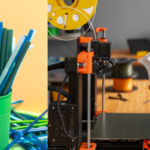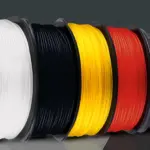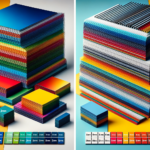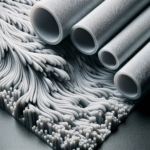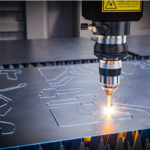Looking to try CNC routing on wood but don’t which wood is ideal for it?
Based on our reviews and years of experience on numerous woods for CNC Routing, we have compiled a few types of woods best suited for CNC routers in accordance with the users. The following article describes the best types of wood you can use for CNC routing.
Read on to expand your knowledge about it!
Table of Contents
What is a CNC wood router?
A computer numerical control (CNC) router is a computer-controlled smart 2D/3D cutting machine that generally ascends a hand-held router as an axis that is used for cutting different materials.
CNC cutting provides a wide scope of applications consequently the CNC routing can be used to cut metal, wood, plastic, acrylic, and most of the materials.
Their most effective usage of CNC routing is cutting the most exact shapes that are the match for industrial applications such as making prototypes. It is also widely used in furniture, musical instruments. CNC wood routing machine can help users save 30% in purchase fees.
Things to consider when buying wood for CNC Routing
There several things you need to consider when you go to purchase your wood for your CNC routing project. Key things you want to know about the piece of wood foregoing to purchase.
- Size: The key wood size of your routed wood sign. Look if the piece of wood is enough for the project. Sometimes you may use a smaller or bigger piece to allow for evading a wrapping or knot because you need different routed wood signs.
- Appearance: Appearance also matters cause a good piece of wood for your routed wood signs should have as a clean appearance as possible. Does the wood have mold or marking which will reduce your purpose?
- Wood wrapping: wrapping is different from the flatness of the wood. This is generally caused by the amount of wet in the wood and the drying process of the wood. There are different kinds of wrapping.
- Bowing: A wrapping which is on the face of the wood.
- Crook: A wrapping which is on the length of the wood.
- Kink: A wrapping more local affected of the wood.
- Cup: A bow along the width of the wood.
- Twist: A displaced wrapping that is not even across the wood.
- Knot: Loops can be a quality and blessing or your worst nightmare. Consider the knots on the wood. Will they be in the place where you are going to be routing? Do the knots have splits? If so, they can fix it with resin?
Types of wood for CNC Routing
Every wood material has its properties and its strengths and weaknesses, and what you’re using in the shop will play a main role in how you work with it and what you’re able to complete. Material affects everything from tool choice and feed range to cutting speed and beyond.
There are many kinds of wood for furniture, signage, cabinetry, and more.
Here are two types of wood for CNC woodworking:
Hardwood
Hardwood generally comes from the temporary trees ( the trees which shed their leaves in the monsoon) and are for the most part darker, harder, and more durable than softwood. They are famous for cutting complex details and forming small cuts, but make sure to check the RpM of your bit before routing or cutting. If your RPM is too high, it can cause the hardwood to start to burn right there on the router table.
Hardwood expands a bit more slowly than softwood, and because of this it can liable to be a bit more expensive, but it is still a long-lasting material good for crafting high-quality decks, furniture, flooring, and more.
Take a look at some popular hardwood types and their characteristics:
- Ash: It is heavy and light in color with lots of rings in its grains.
- Beech: It is stiff, strong, and shock-resistant, and its small pores mean it is less likely to shard than a more leaky alternative.
- Birch: It is a stiff wood with a very light color and wavy grain.
- Cherry: It is a light reddish-brown hardwood that is strong and resistant to wrapping, making it a popular choice for craving.
- Elm: It is light brown, tough, and color, though it does have a fairly low decay resistance.
- Mahogany: It is a strong reddish-brown wood with even pores and dark rings. It also works well for engraving, craving.
- Maple: This is one of the hardest woods out there and is useful for its lasting. It also resists electrical shock well and has even pores and grain.
- Oak: It is heavy and tough and rarely breaks. Is ring rain prominent, making it useful for beautiful visual applications?
- Walnut: It is a strong, durable brown hardwood with a straight grain in its trunk that grows waiver toward the roots.
Softwood
Softwood is mostly obtained from trees that have needles that don’t shed in the winter and are mostly lighter in color. This kind of easier to cut but if your bit is dull or of poor quality, a split is likely to appear. Not every softwood is soft and lights, some are harder also, so be sure you opt for the ideal wood for your CNC routing project.
Take a look at some of the most popular kinds of softwood that is mostly used for CNC project.
- Cedar: It is the most used wood and has a pleasing aroma with a reddish-brown color. Somehow it is tough to work with it cause it has many knots.
- Cypress: This softwood is also known for its knots and is not specifically strong though it does have good decay resistance.
- Pine: It has a lighter pale color, and it is lighter in weight. This has resistance to shrinking.
- Fir: It has an even rational pattern and is fairly easy to work with.
- Spruce: This is the most harder softwood and is fairly lightweight, though it is not decay-resistant.
- Redwood: It is known for its red shade and is sunlight resistant to decay.
- Yew: Although this is softwoods, yew is hard than hardwoods. It endures decay well and has average strong and little stiffness.
Other options
MDF Medium-density fiberwood: This is made of a mixture of softwood, hardwood, and wax, and resin binders, and while it cuts smoothly and is easy to work with through CNC machines, it is mostly suggested to the work that will be painted.
Plywood: This is made by coating and layering sheets of material together with glue. Because of this, the direction of the grist changes from one layer to the next, making plywood more liable to splinter. It can lead to the best outcome for economic processes or practice cuts.
Conclusion :
CNC routing tool uses all kinds of wooden materials and cuts out the most complex shapes including emblems, logos, fonts, etc. It offers precision and speed at the same price that is affordable to the craftsman.
If you have any projects regarding CNC Routing Services contact Any Shape Plastics.

